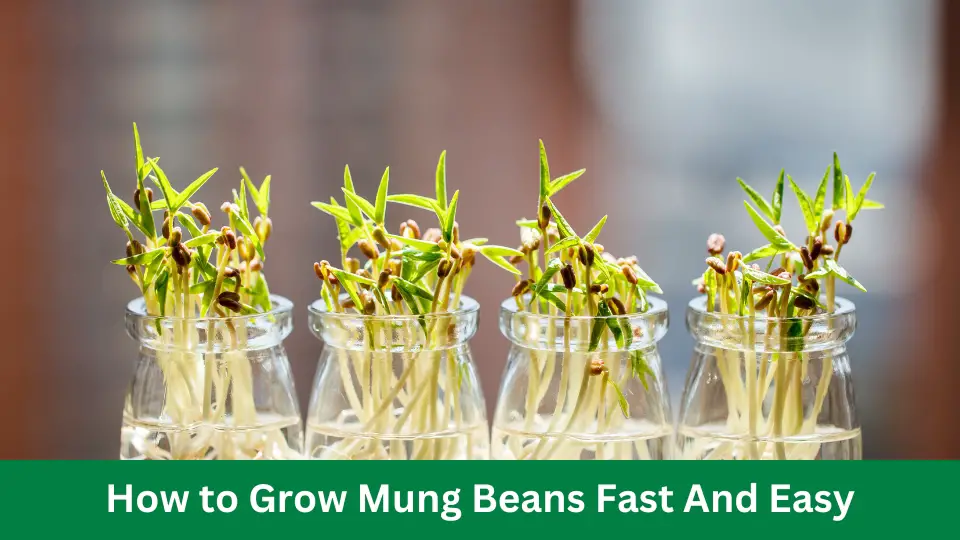To grow mung beans, soak the seeds overnight, then plant them in a sunny spot with well-draining soil. Water them regularly, ensuring the soil remains moist but not soggy.
Growing mung beans offers a rewarding gardening experience, as these legumes are fast-growing and nutrient-rich. Ideal for health-conscious individuals, these small green gems are packed with protein and can sprout within a few days. Their adaptability makes them suitable for various growth environments, from outdoor gardens to indoor containers.
The process starts with selecting quality seeds and pre-soaking them to initiate germination. Requiring minimal care, mung beans thrive in warm conditions with ample sunlight. Regular watering fosters sprout development, yet gardeners must avoid over-saturation to prevent mold or fungal issues.
As a staple in many Asian cuisines, fresh mung beans can elevate home cooking with their fresh crunch and subtle flavour, making them a popular choice for home gardeners and culinary enthusiasts.
Choosing The Right Mung Beans Variety
Starting your mung bean journey begins with selecting the appropriate seed variety. The choice determines the taste and size of your beans and your garden’s overall success. Let’s explore how the local climate impacts bean types and the benefits of organic versus conventional seeds.
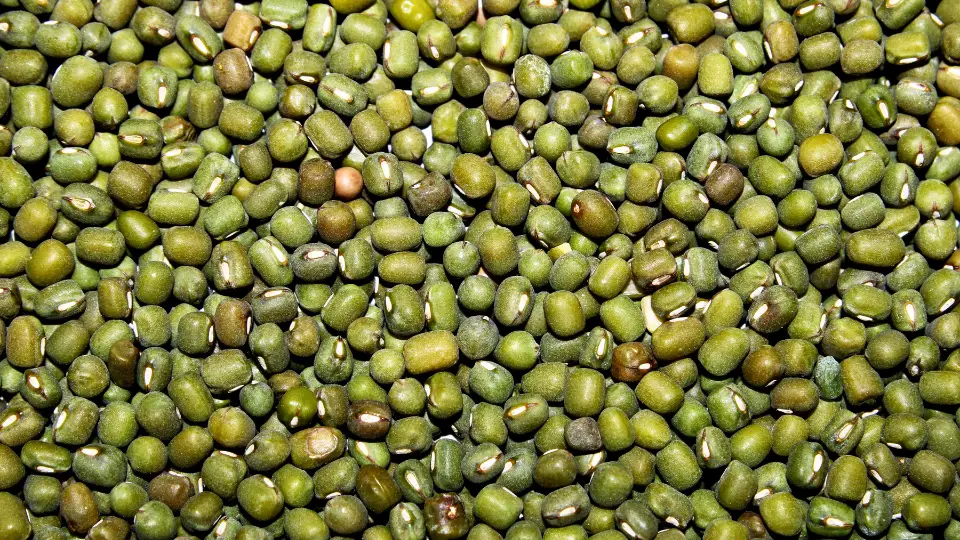
Local Climate And Bean Types
Understanding your local climate is key to choosing the best mung bean variety. Mung beans prefer warm temperatures and plenty of sunlight. However, some varieties are more tolerant of cooler conditions.
| Bean Type | Climate Preference | Features |
|---|---|---|
| Vigna radiata | Warm, tropical | Common variety, fast-growing |
| Vigna mungo | Mild, subtropical | Black gram, drought-resistant |
Choose a type that matches your area’s climate for optimum growth.
Organic vs. Conventional Seeds
- Organic seeds are not treated with chemicals, promoting a natural growing process.
- Conventional seeds may be treated to increase shelf-life and prevent disease.
While conventional seeds offer easy access and sometimes lower costs, organic seeds ensure a chemical-free harvest. Your choice should align with your gardening values and desired mung bean characteristics.
Preparing For Planting
Growing mung beans is a rewarding endeavour. Proper preparation ensures a bountiful harvest. This section covers everything you need to know before planting your mung beans, from soil selection to soaking beans and choosing containers for indoor planting.
Selecting The Correct Soil
Mung beans thrive in a well-draining soil that retains moisture without becoming waterlogged. A loamy-sandy mixture with a pH level between 6.2 and 7.2, suits mung beans perfectly. Keep the soil loose to allow root growth and avoid soil compaction.
Bean Soaking Methods
Soaking your mung beans accelerates germination. Immerse beans in three times their volume of water. Soak them overnight or for 8-12 hours.
This process softens the outer shell, encouraging the sprout to emerge. Drain the water and rinse the beans before planting.
Container Choices For Indoors
Choosing the right container is essential for indoor growth. Ensure proper drainage to prevent overwatering. Containers can range from traditional pots to repurposed items like jars or trays.
Ensure your container is deep enough to accommodate root growth, ideally around 8–12 inches deep.
Sowing Mung Beans
Growing mung beans begins with the simple step of sowing. Proper sowing ensures your mung beans get the best start. Let’s dive into the process of planting these versatile legumes.
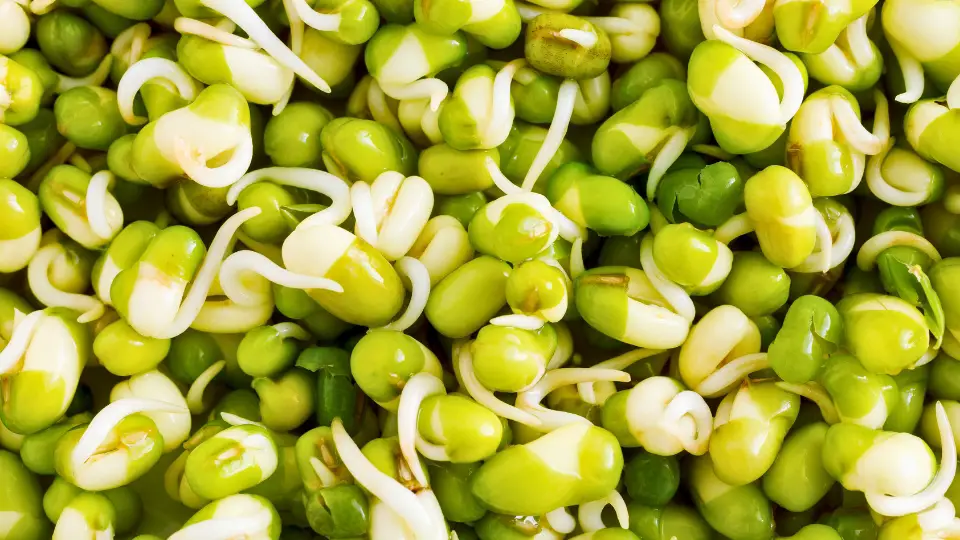
Ideal Sowing Depth And Spacing
Mung beans thrive when sown at the correct depth and spacing. The ideal sowing depth is about 1 inch (2.5 cm) below the soil surface. Space the seeds 2-3 inches (5-7.5 cm) apart for optimal growth in rows.
| Aspect | Recommendation |
|---|---|
| Sowing Depth | 1 inch (2.5 cm) |
| Seed Spacing | 2-3 inches (5-7.5 cm) |
| Row Spacing | 18-24 inches (45-60 cm) |
Outdoor versus indoor sowing
Outdoor Versus Indoor Sowing
Decide whether to plant indoors or outdoors based on your climate. Outdoor sowing is perfect for warm climates. Plant the seeds directly into prepared beds.
- Outdoor sowing is best in temperatures between 68°F to 86°F (20°C to 30°C).
- Make sure to choose a spot with full sun exposure.
Indoor sowing suits gardeners in cooler regions. Start seeds indoors using trays or pots. This method allows for an early start to the growing season.
- Use a good-quality seed-starting mix in your containers.
- Keep the soil moist but not waterlogged.
- Place the containers in a warm spot with plenty of light.
Caring For The Growing Plants
Proper care ensures healthy plants and bountiful harvest as your mung beans sprout and grow. Attentive watering, pest management, and appropriate fertilization are key aspects. Let’s delve into each aspect of cultivating thriving mung bean plants.
Watering Schedule
Consistent moisture is crucial for mung beans. Overwatering can lead to root rot while underwatering stresses the plant. Ideally:
- Water once a day, early in the morning.
- Ensure the soil is moist but not soggy.
- Reduce frequency if rainfall is adequate.
Dealing With Pests
Pests can hinder growth. Regular checks help detect early signs of insect invasions. Effective strategies include:
- Introduce beneficial insects like ladybugs to control aphids.
- Use organic insecticidal soap for infestations.
- Maintain clean surroundings to deter pests.
Fertilization Needs
Mung beans fix their nitrogen, so excessive fertilization isn’t necessary. However:
| Plant Stage | Fertilizer Type | Frequency |
|---|---|---|
| Initial Growth | Compost or well-rotted manure | Once, at planting |
| Flowering | Low nitrogen blend | As needed, sparingly |
Tip: Always test soil Before applying fertilizer, determine nutrient needs. A balanced approach promotes vibrant growth without overwhelming the plant.
Monitoring For Sprouting
Monitoring for Sprouting is a crucial step in growing mung beans. Watchful eyes ensure a successful crop of nutritious sprouts. Please keep track of your mung beans as they begin their growth journey.
Let’s explore how to identify germination and control the environment for optimal sprouting.
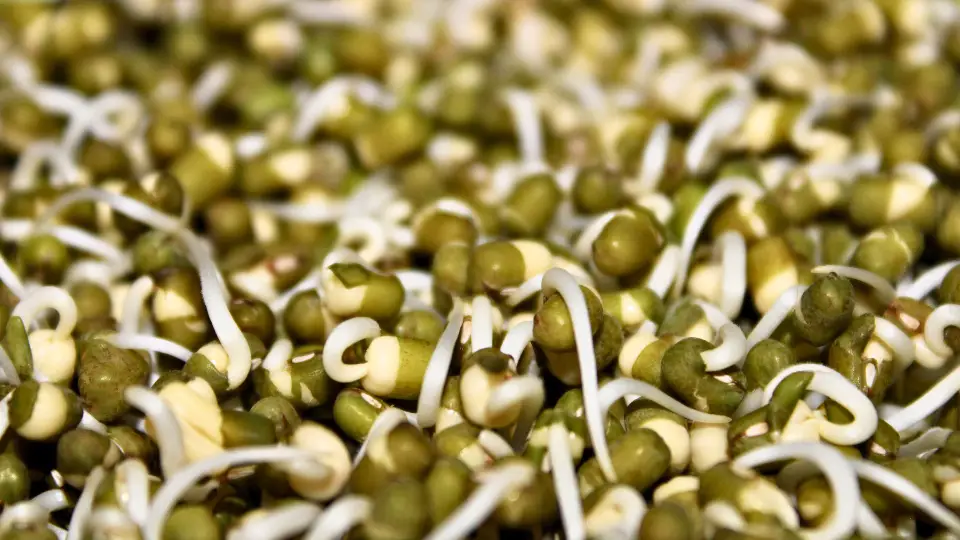
Recognizing Germination Signs
As your mung beans start to sprout, certain signs indicate successful germination. Look for these key indicators:
- White Root Emergence: A tiny, white tip will emerge from one end of the bean.
- Split Bean Cases: The outer shell of the bean will split, indicating growth.
- Shoots Lengthen: Within a few days, the white root will lengthen and grow upwards.
Managing Humidity And Temperature
The right environment is key to mung bean sprouting success. Keep these conditions in check for the best sprouts:
| Condition | Goal |
|---|---|
| Humidity | Keep high, but avoid excess water |
| Temperature | Maintain between 70-80°F (21-27°C) |
Cover your beans with a damp cloth to maintain moisture. Avoid waterlogging, as it can cause rot. Ensure a warm, stable temperature using a room heater if necessary.
Mung Beans Harvest Time
As growing mung beans reaches its finale, anticipation for harvest grows. Knowing the right time to harvest ensures the beans’ best flavour and longevity. Whether preparing sprouts or cultivating mature beans, each has its own signal for readiness.
Let’s dig into the details of harvesting mung beans.
Recognizing Maturity
To recognize mature mung beans, look for brown and dry pods. Inside, the beans should be firm to touch. When most pods meet this description, it’s time to consider harvesting.
- The pods are brown and dry.
- The beans inside feel hard.
- Leaves may start to yellow.
Harvesting Techniques
Proper harvesting techniques prove crucial for bean quality. Hand-picking is a common method for small-scale gardens. Pull or snap the pods off the plant. For larger crops, a combined harvester speeds up the process. After collecting, the beans need to dry further before being stored.
- Check the beans for readiness.
- Hand-pick or use machinery
- Dry beans after harvesting
Sprouts Vs. Mature Beans
| Sprouts | Mature Beans |
|---|---|
| Harvest in 3-5 days | Harvest in 90-120 days |
| Look for white roots | Look for dry pods |
| Use a colander or jar | Pick or machine harvest |
Storing And Using Mung Beans
Mung beans, a versatile legume, are easy to grow and store, and delightful to use. Once harvested, proper storage extends their shelf life, ensuring they remain fresh and nutritious. Read on to discover practical solutions for long-term storage and exciting ideas for savouring your mung beans in various dishes.
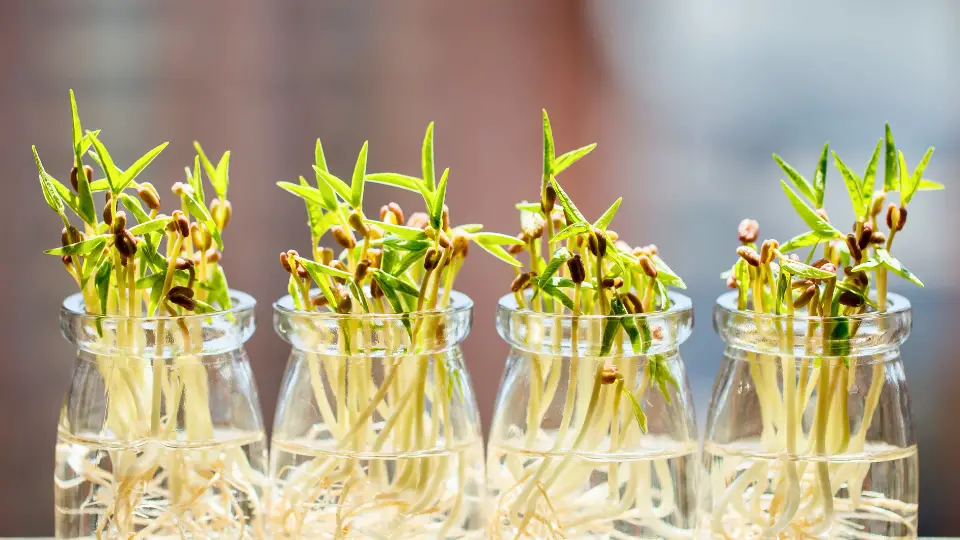
Long-term Storage Solutions
To keep mung beans fresh for months, consider these tips:
- Ensure beans are completely dry before storage.
- Use airtight containers to prevent moisture and pests.
- Store in a cool, dark area like a pantry or cellar.
- Vacuum sealing greatly extends their shelf life.
- For extended storage, consider freezing the beans.
| Method | Expected Shelf Life | Notes |
|---|---|---|
| Pantry | Up to 1 year | Use airtight containers |
| Refrigerator | 1-2 years | It is best if vacuum-sealed |
| Freezer | 2+ years | Prevents insect infestation |
Cooking And Usage Ideas
Mung beans are not only nutritious but also highly adaptable in the kitchen.
Here’s how you can use them:
- Soak overnight and boil for soups or stews.
- Sprout the beans for a crunchy addition to salads.
- Create a healthy mung bean dip with herbs and spices.
- Include in vegetable stir-frys for added protein.
- Use in desserts like Thai mung bean pudding.
With these ideas, you can maximize the utility and enjoy every bit of your homegrown mung beans.
Frequently Asked Questions For How To Grow Mung Beans
How Long Do Mung Beans Take To Grow?
Mung beans typically take 90 to 120 days to grow from seed to harvest.
How Do You Grow Mung Beans At Home?
To grow mung beans at home, soak the seeds overnight. Plant them in well-draining soil and water regularly. Ensure they receive ample sunlight and keep them in a warm spot. Harvest sprouts in about 3-4 days, or wait for the plant to mature.
Where Do Mung Beans Grow Best?
Mung beans thrive in warm climates with well-drained, fertile soil and full sun exposure.
Decision
Growing mung beans is a rewarding endeavour filled with nutritional benefits and simplicity. Whether it’s your first venture into gardening or you’re a seasoned green thumb, the ease of sprouting these legumes is unmatched. Remember to moisten the soil, provide adequate sunlight, and maintain a mild temperature for the best results.
You’ll enjoy a bountiful harvest of mung beans with patience and care. Start your planting journey today and relish the fruits of your labour!
This Article Information Capture From This Video: https://www.youtube.com/watch?v=n4f-jtH7bvY

